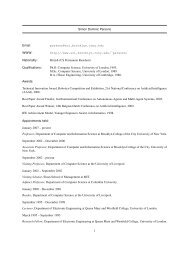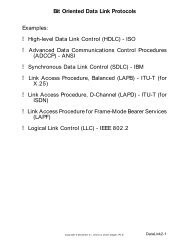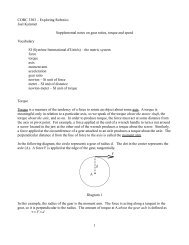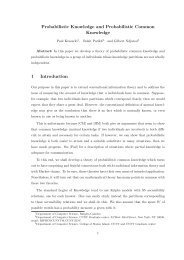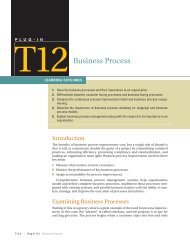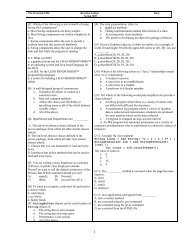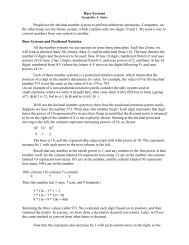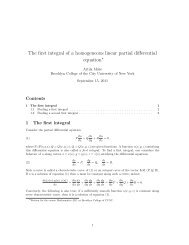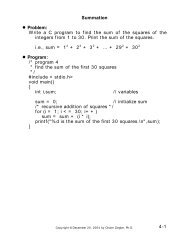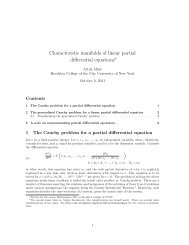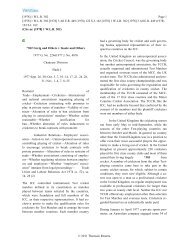Chapter 5: Architecture - Computer and Information Science - CUNY
Chapter 5: Architecture - Computer and Information Science - CUNY
Chapter 5: Architecture - Computer and Information Science - CUNY
You also want an ePaper? Increase the reach of your titles
YUMPU automatically turns print PDFs into web optimized ePapers that Google loves.
5.2. CLASSICAL GATES 15<br />
A is a 2 m by 2 n matrix. B is a 2 m−p by 2 q matrix. Since nothing should be<br />
done to the m − p bits, we might represent this as the 2 m−p by 2 m−p identity<br />
matrix I m−p . We do not draw any gate for the identity matrix. The entire<br />
circuit can be represented by the following matrix<br />
Example 5.2.2 Consider the circuit<br />
(B ⊗ I m−p ) ⋆ A. (5.47)<br />
This is represented by<br />
OR ⋆ (NOT ⊗ AND). (5.48)<br />
Let us see how the operations look like as matrices. Calculating, we get:<br />
⎡<br />
⎤<br />
0 0 0 0 1 1 1 0<br />
⎡ ⎤ ⎡ ⎤<br />
NOT ⊗ AND = ⎣ 0 1 ⎦ ⊗ ⎣ 1 1 1 0<br />
0 0 0 0 0 0 0 1<br />
⎦ =<br />
.<br />
1 0 0 0 0 1 ⎢<br />
⎣<br />
1 1 1 0 0 0 0 0⎥<br />
⎦<br />
0 0 0 1 0 0 0 0<br />
(5.49)<br />
And so we get<br />
⎡<br />
OR ⋆ (NOT ⊗ AND) = ⎣ 0 0 0 0 1 1 1 ⎤<br />
0 ⎦ . (5.50)<br />
1 1 1 1 0 0 0 1<br />
Let us see if we can formulate DeMorgan’s laws in terms of matrices. One<br />
of DeMorgan’s law states that ¬(¬P ∧ ¬Q) = P ∨ Q. In pictures this looks like<br />
In terms of matrices this corresponds to<br />
NOT ⋆ AND ⋆ (NOT ⊗ NOT) = OR. (5.51)



